The term “Seedy Toe” describes a hoof wall separation that occurs as a sequel to laminitis. This separation starts between the dermal and epidermal laminae when, and if, rotation or skinning of the distal phalanx occurs. The space filled with soft amorphous horn cells grows down with the hoof wall until it reaches the white line’s ground surface. The poor quality of the soft crumbly horn allows foreign material and infection to penetrate. This can result in a subdural abscess.
What is Seedy Toe?
Seedy toe is one of the most important horse hoof diseases. Hoof wall separation can also begin at the while line and spread upwards underneath the hoof wall between the epidermal-dermal laminar bond in a normal horse hoof. It is thought that it happens as a consequence of infection of the epidermal laminae with anaerobic keratolytic bacteria or yeasts, which gain access to the area via a damaged white line. These slowly digest the horn of the epidermal laminae while the dermal laminae develop a protective horn cuticle. As the epidermal-dermal laminae bond is broken down, the distal phalanx loses its attachment to the hoof wall and may rotate as in laminitis.
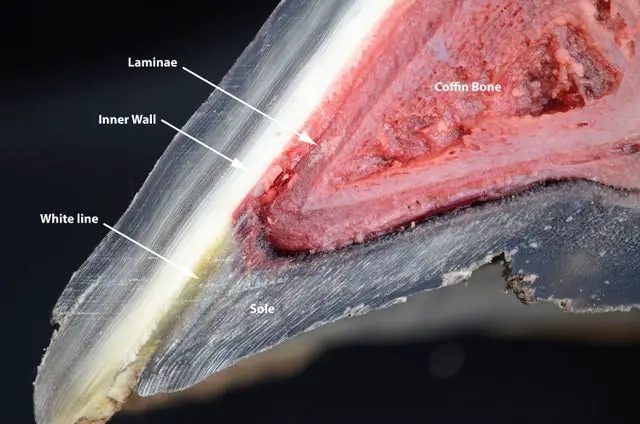
All of the feet may be affected with seedy toe depending on the severity of the original laminitis. In cases with hoof wall separations, often only one foot is affected, and it is affected, and there is usually no previous history of laminitis.
Clinical Signs of Seedy Toe
Clinical signs related to seedy toe are for chronic laminitis. Lameness is not usually present in the early stages of hoof wall separations, but the separation between the sole and the wall at the white line will be evident. The lesion can occur anywhere on the white line. It is usually refractive to the conservative method of treatment. Typically, a “Cigarette ash” type discharge will be found around the edges and in the lesion’s depth as a result of horn destruction.
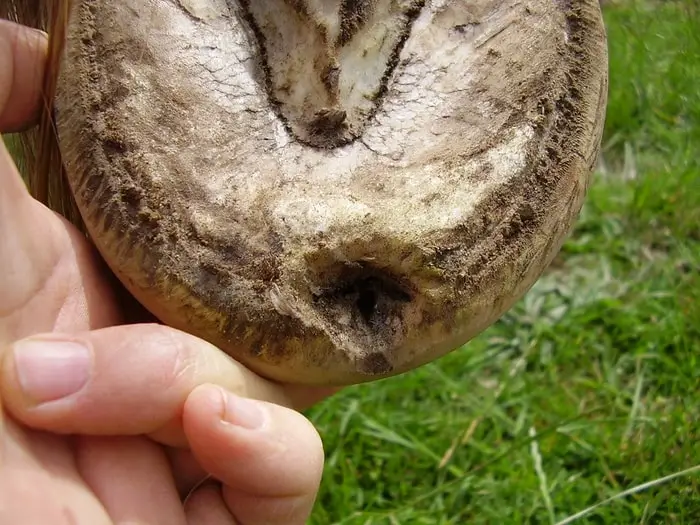
Lameness will be evident when the separation is extensive enough to cause instability and some degree of rotation of the distal phalanx. Lameness can be quietly marked with the horse adopting a laminitic gait. On examination, the sole may be dropped, and there may be evidence of sole bruising and a pain reaction to pressure with hoof testers.
Diagnosis of White Line Disease
The diagnosis is based on the clinical signs and the insidious nature of the lesion.
Radiographic examination is important to assess the extent of the separation, whether there is a rotation of the distal phalanx and any evidence of pedal osteitis, all of which will affect the treatment and prognosis.
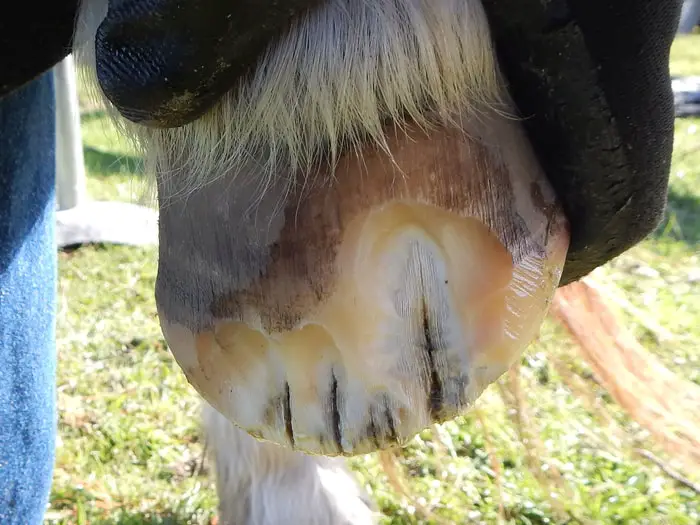
Treatment of Seedy Toe in Horses
- The treatment of hoof wall separation will require the removal of all the infected, necrotic horns.
- Infective agents involved in this condition thrive in an anaerobic environment. It essential to remove all the underrun hoof walls to expose the infected material could remain.
- In some cases, quite large areas of the hoof wall may need to be removed, and this should not be replaced with hoof repair material as this will recreate an anaerobic environment.
- The dermal laminae present in the infected area usually covered in a protective horn cuticle.
- Old or necrotic horns over this layer should be carefully debrided, and the surface treated with an antiseptic solution such as Povidone-iodine or Oxytetracycline.
- If possible, the foot should be shod with a seated out and flat, and broad webbed shoe fitted long at the heels or a full bar shoe to try and support the foot until the hoof wall regrows.
- A large amount of hoof wall has been removed; it may not be possible to fit a conventional horseshoe.
- A glue-on shoe can be used. Alternatively, the foot can be left bare, and the horse kept on a soft dry surface until the hoof wall grows.
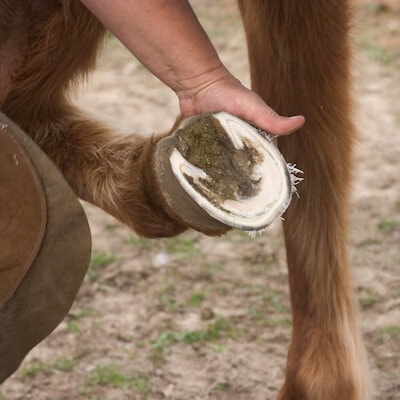
Prognosis of White Line Disease
The prognosis is good, providing the distal phalanx, and the corium has not been severely damaged. Treatment and healing can be a prolonged process, so the earlier the course of the disease treatment is fomented, the better the chances of success.
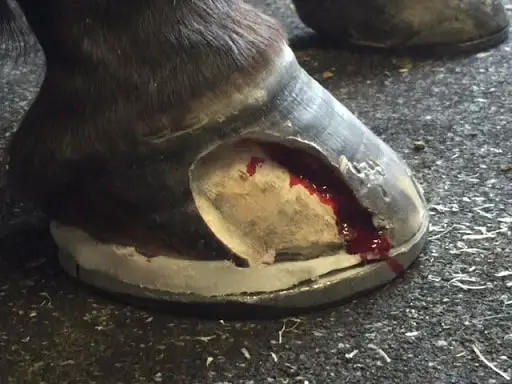
Final Advice on Seedy Toe in Horses
Seedy toe or white line disease is characterized by separation of the laminae of the wall and sole, usually at the toe. The wall in the affected area sounds hollow when rapped with a hammer, and generally, there is a dished appearance to the foot. The cause is not known though faulty foot conformation will predispose to the development of seedy toe. It is often seen in flat-footed horses and infrequently trimmed or shod horses.
An effective way to treat seedy toe is to re-establish the normal angle of the hoof. The defective wall should be trimmed away, and the diseases part of the hoof wall and sole removed. Occasionally a rim shoe may be necessary to decrease the pressure on the defective wall.
